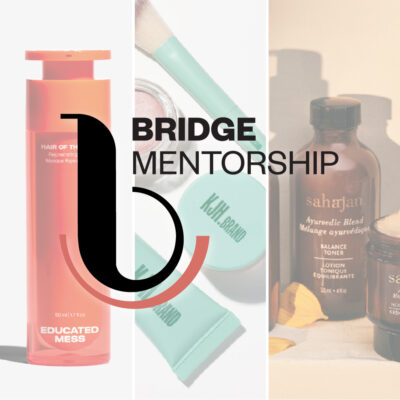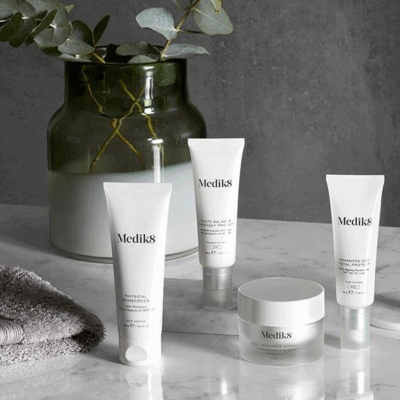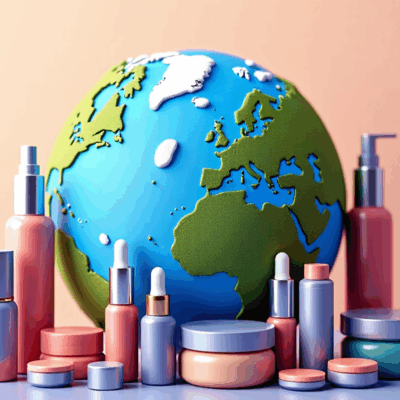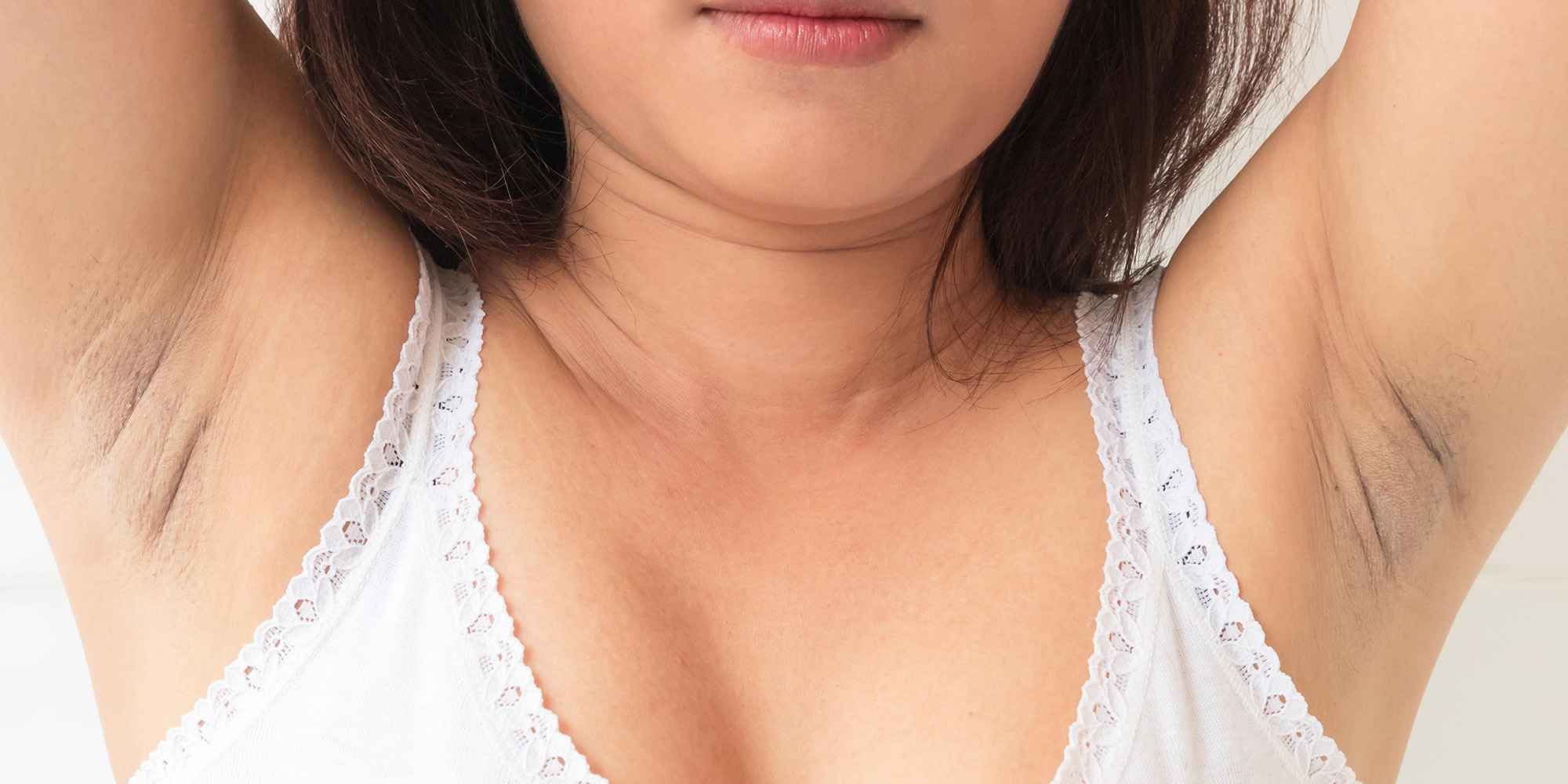
Armpits Are The Latest Beauty Industry Hot Zone
Most people don’t use more than one or two topical products for their armpits: deodorant and some sort of shaving cream every so often.
But brands are expanding the universe of armpit products and elevating lowly pits to star status in the beauty industry. Forgotten Skincare, Volition Beauty and Kaia Naturals have underarm brightening deodorants, Joban Beauty specializes in a deodorant that conceals underarm discoloration, and Fur sells a deodorant aimed at reducing ingrown hairs.
Not to mention, the latest Dove body-positive campaign focuses on acceptance of armpit hair and skin. The campaign includes a #FreeThePits initiative encompassing New York City subway advertising, a pop-up and an #ArmsUp video featuring women showing off their underarms. “My hairy underarms do not define my womanhood,” says Jari Jones, a trans woman in the video.
Brands are responding to decreased stigma around armpit hair, thanks to celebrities like Ashley Graham sharing photos of themselves with visible hair under their arms and others such as Miley Cyrus dying theirs. “The body positivity movement has led to a broader acceptance of different body types and skin conditions,” says aesthetician Ian Michael Crumm, who has also seen exfoliating scrubs specifically for the armpits crop up recently. “This has created a space for people to address concerns about their underarms without feeling ashamed or stigmatized.”
As a result, brands are putting the standard deodorant to shame. “More and more, we’ve seen the underarm category expanding,” says Lillian Tung, co-founder of Fur. “We’ve also seen more variety when it comes to underarm hair grooming.”
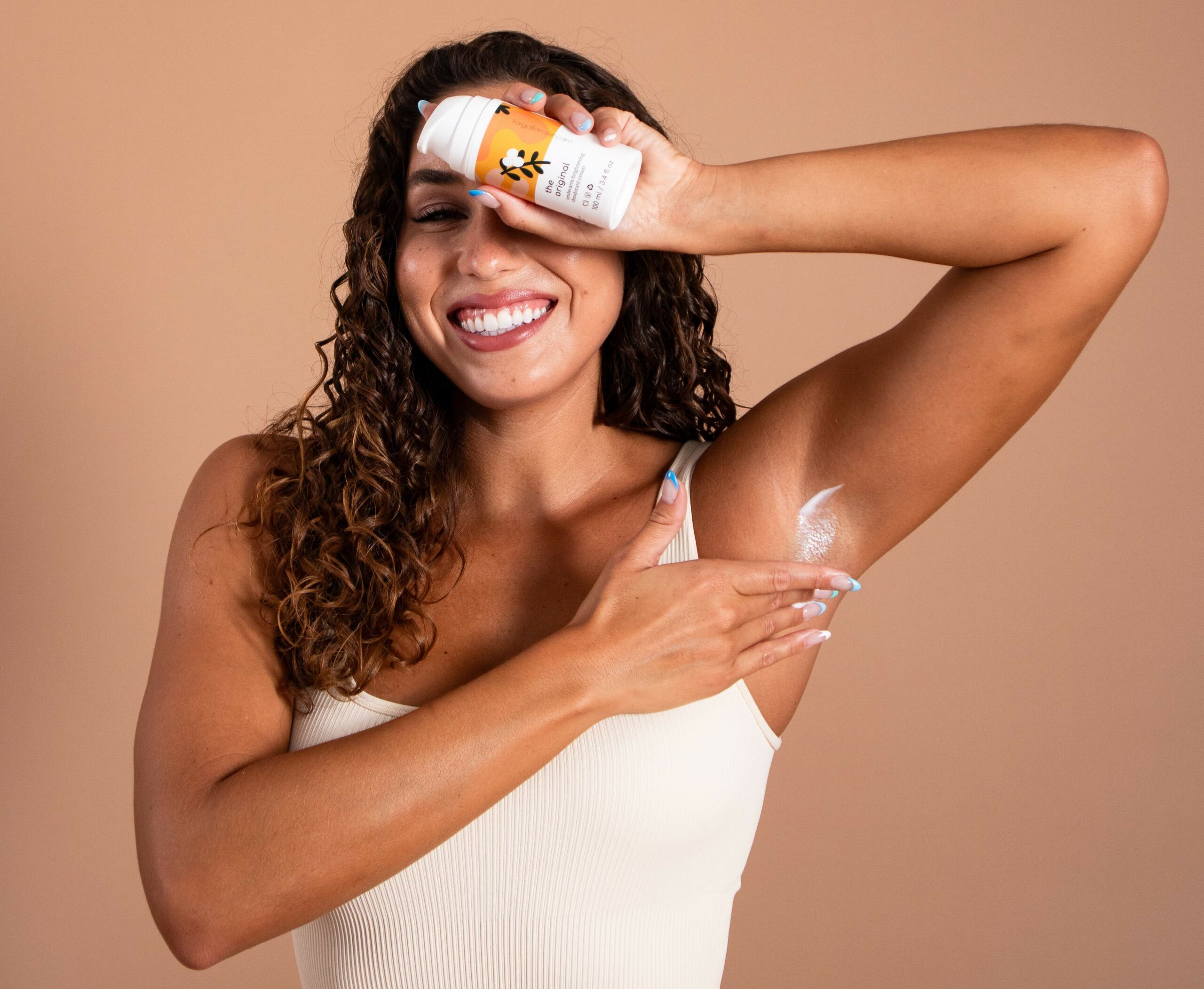
Tung reasons the expansion of armpit products stems from customers’ increased attention to the quality of their skincare. For instance, rather than applying any old deodorant, people would rather purchase something that’s good for their skin. Tung says, “As we’ve become more informed as consumers—and empowered to make choices that actually serve us—you see the conversation start to move beyond just hair removal and bottom-shelf quality products.”
In addition, brands are feeling pressure to innovate because there are already a ton of deodorants. “The market for natural deodorants has become saturated, and so the prospect of a multiuse product that deodorizes, but also gently exfoliates and visibly brightens offers a competitive edge,” says Patricia Santos, co-founder and CEO of Volition Beauty. “The demand for multiuse products never seems to disappear, and it ebbs and flows in response to discretionary spending. Right now, consumers are looking for multiuse products because they save on their wallets and also save them valuable time.”
A rising interest in body care and social media exposing people to the array of body care options brands are supplying are additional reasons for the hotter spotlight on armpits. “The body care market has grown over the past several years, especially after the pandemic,” says Rebecca Marcus, dermatologist and founder of skincare brand Maei MD. “Social media has played a major role in skincare and body care trends.
While some of the products emerging from these trends are new, the brands behind them say that the rationale for them isn’t new. For instance, between 7% and 74% of people are estimated to have a skin condition called acanthosis nigricans characterized by dark, coarse and thickened skin on the underarms and elsewhere. According to Marcus, it’s common for the underarms to become hyperpigmented over time due to friction, especially among people with darker skin.
“More and more, we’ve seen the underarm category expanding.”
“Hair removal in this area and even hormonal changes such as during pregnancy can also lead to hyperpigmentation,” says Alex Pottash, founder and CEO of Forgotten Skincare. She figures there are greater numbers of products for dark underarms today because brands are catering to people of color in ways they weren’t in the past.
“I think [armpit pigmentation] was an area that was previously not addressed,” says Kaia Naturals founder Mary Futher, known on TikTok as Madame Sweat. “Consumers quietly dealt with the issue with DIY methods (crazy methods like lemons). This was evidenced on YouTube. So, the response has been excellent and continues to grow.”
Pottash got the idea to create Forgotten Skincare’s brightening deodorant from studying Google search data. “There were hundreds of thousands of searches a month for ‘dark underarm’ terms,” she says. “People were so happy with the formula because they finally felt like a company was thinking about their specific underarm concerns that have kept them from feeling confident to wear sleeveless tops.”
Volition created its brightening deodorant in response to customer demand and online trends. “We had a four-digit waitlist,” says Santos. “I think that dark underarms have always been an issue, particularly for melanated skin, but not something that brands have directly addressed in a significant way. A lot of consumers have had to make do—until now. In addition, the market for natural deodorants has become saturated, and so the prospect of a multiuse product that deodorizes, but also gently exfoliates and visibly brightens offers a competitive edge.”
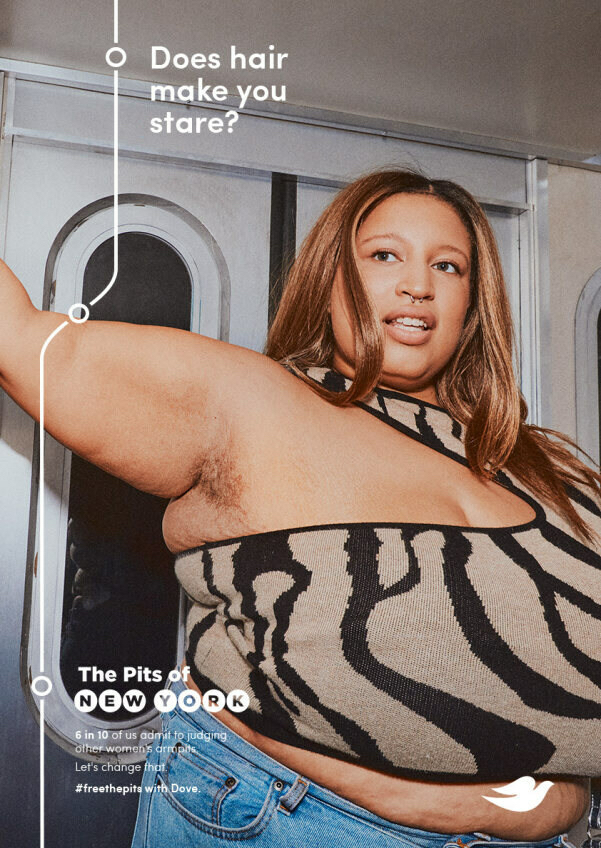
Futher, whose brand makes a soap specifically for the armpits along with a brightening bar and deodorant, explains that people with dark underarms were intimidated to talk about it before. “I found out because I was receiving DMs and emails from customers asking me if our charcoal deodorant would help as they saw it on Youtube,” she says. “When we started looking into it, we realized it was a huge problem…that consumers either were too embarrassed to speak about it or just thought there was nothing to fix.”
Agreeing, Tung says, “There is a real demand for clean, derm- and gyno-tested products for every part of the body, even the places that used to be considered taboo. I hope customers continue to demand the best, stay informed and realize that no concern is too small to be taken seriously.”
Critics of the new spate of underarm products, however, take issue with the notion that there is something to “fix” about underarm skin. Could decreased stigma and increased discussion around armpits lead to more self-consciousness? Could the armpit products prompt people to identify problems they would be fine ignoring?
Sarah Melancon, a sociologist, sexologist and lead researcher at Women’s Health Interactive, is apprehensive about the consequences of these products. “The challenge is that, when a product is marketed, those who don’t have hyperpigmentation will also be exposed to the advertising,” she says. “Considering the social media era, where we face higher levels of body surveillance than ever before, these products are simultaneously bound to create insecurities where there was none prior. This process is similar to what occurs with pharmaceutical advertising. Both the ‘condition’ and the ‘solution’ are advertised simultaneously, leaving many to become convinced they have a problem that requires an often-expensive product to fix.”
“It’s important for individuals to approach underarm skincare with a healthy balance between self-care and self-acceptance.”
Crumm concurs that people are currently “paying more attention to previously overlooked areas like the underarms,” which could cause “concerns about overemphasizing physical appearance and the potential for companies to exploit insecurities for profit.” He says, “It’s important for individuals to approach underarm skincare with a healthy balance between self-care and self-acceptance.”
Before Dove unleashed its #FreeThePits campaign, which isn’t explicitly tied to a product, although Dove is promoting an antiperspirant, the brand conducted a survey showing that eight in 10 women thought their underarms “don’t look, feel or sweat like the ideal,” per Pranav Chandon, head of deodorants for the United States at Dove parent company Unilever. “We were inspired to do something that empowers women to embrace their underarms and shatter underarm beauty standards.”
Yet, underarm products may perpetuate beauty ideals with their messaging. “I would hypothesize that, if these products continue to grow in popularity, we will begin seeing greater insecurity about the underarm area, particularly in younger women who spend a lot of time on social media,” says Melancon. “The sexologist in me can’t help but note that while one may feel insecure about having darker underarms, some romantic or sexual partners may actually find it attractive.”
Nevertheless, for people worried about armpit hyperpigmentation, there’s research showing that natural ingredients like those in the brightening armpit products’ formulas can be beneficial, adds Melancon. And ingrown hairs can be a comfort issue rather than an appearance issue, so products addressing them may not always exploit or instigate insecurities.
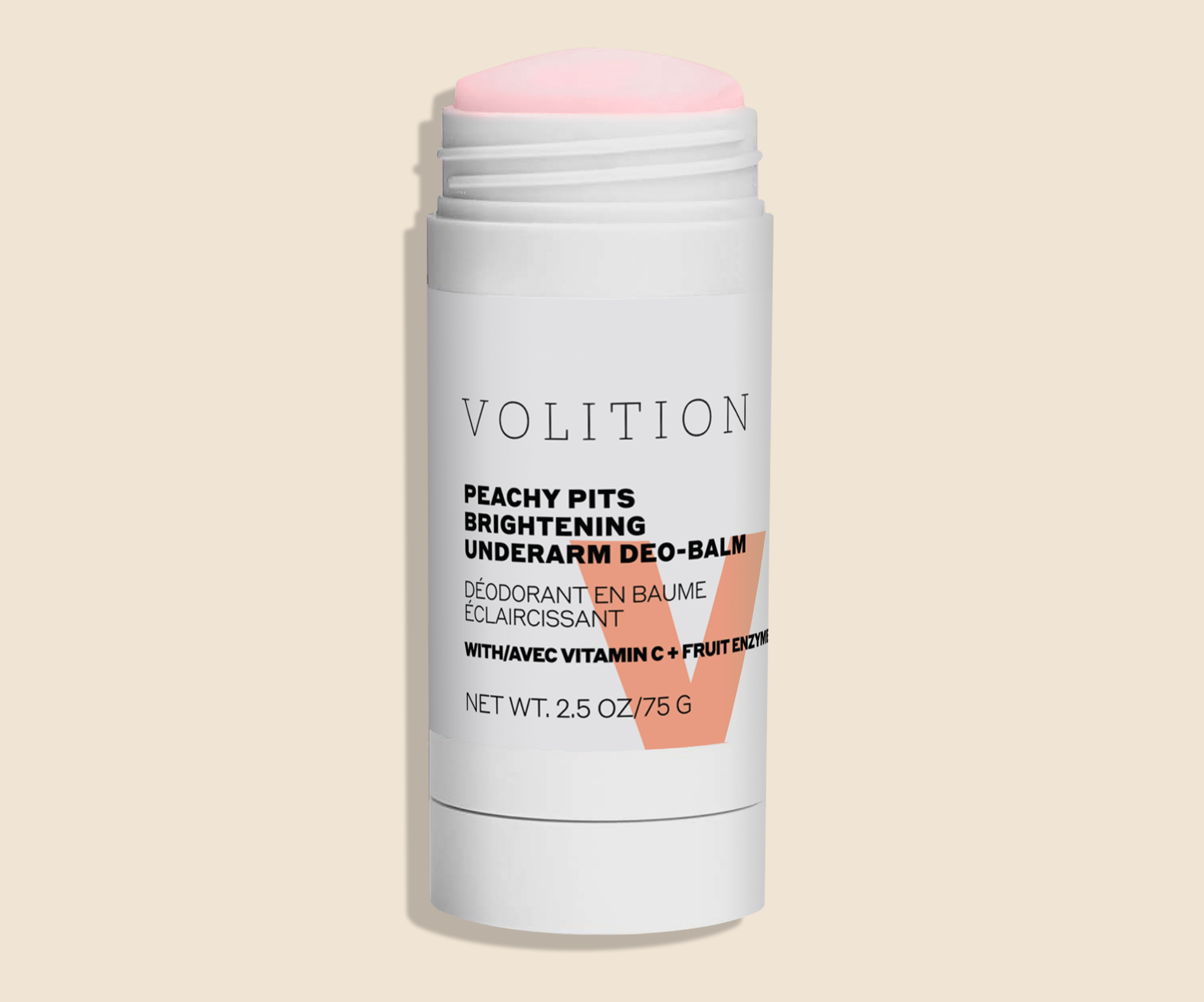
Regardless of their impact on self-consciousness, experts expect the range of armpit products—and the market for them—to grow. “There will be more products that address this oft-neglected part of the body,” says Santos. Futher predicts that “the next big problem is extreme weather…controlling sweat and staying odor free all day [during heat waves] is going to be a really big issue.” She says consumers will clamor for natural deodorants powerful enough to control large amounts of perspiration.
Pottash views the growth of the underarm product market as healthy for brands and the consumers buying their goods. While armpits haven’t traditionally been seen as the most attractive body parts, she argues underarm care products are giving people the chance to embrace this part of themselves. “After speaking with my customers, I know they are willing and ready to add on to their underarm care routines because they realize this is skin on their body that feels sensitive to reveal in public,” she says. “They want to feel confident to strip down, raise up and uncover what feels forgotten.”
KEY TAKEAWAYS
- More products are popping up for the underarms that go beyond standard deodorants, including deodorants for brightening hyperpigmented underarms and reducing ingrown hairs.
- The increase in armpit products comes as social media is increasing their exposure and body care has been a hot category in the beauty industry.
- The brands behind these items say there’s long been demand for them, but people have been too embarrassed to talk about the issues that have given rise to them.
- Dark underarm skin is more common among people of color, who’ve historically been neglected by the beauty industry.
- The downside of growth in the underarm care market is that people who’ve not previously thought about issues like the color of their underarms may develop insecurities due to these products’ marketing.
- Experts believe that there will be more underarm products, including products that respond to the effects of climate change.


